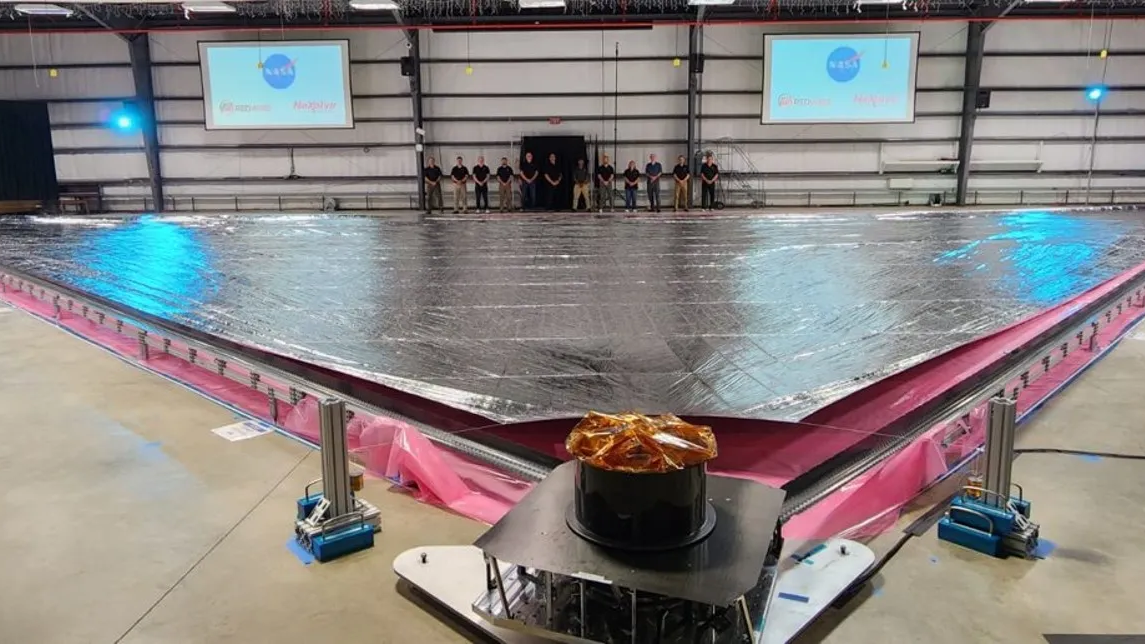NASA’s Solar Sail Is So Close to Harnessing Sunlight for Propulsion

Solar sails, ultra-thin polymer “sails” that leverage the Sun’s photons as a means of propulsion, have been sent into orbit for more than a decade, but now NASA is prepping it’s own version.
On January 30, the solar sail aced its final test and successfully deployed one quadrant along a 100-foot-long boom.
NASA says the technology is now TRL (technology readiness level) 6, meaning it’s ready for space missions.
Deep space missions are many things, but “cheap” is not one of them. It takes a lot of money to get a spacecraft (along with a lifetime supply of fuel) beyond Earth’s orbit. Luckily, NASA (along with its space subcontractor, Redwire) have developed a solution that’ll help lighten the load and the cost—a solar sail.
On January 30, 2024, Redwire officially deployed one quadrant of its solar sail at its Colorado-based facility, proving that the technology is now ready for space missions. NASA’s Marshall Space Flight Center led the solar sail team, with the Alabama-based NeXolve and Redwire designing the sail’s deployment mechanism once in space. The polymer material coated in aluminum successfully deployed along a 100-foot-long boom, and when all four quadrants deploy in space, it’ll fill up 17,780 square feet and will power light-payload space missions.
“This was a major last step on the ground before it’s ready to be proposed for space missions,” NASA technologist Les Johnson said in a press statement. “What’s next is for scientists to propose the use of solar sails in their missions. We’ve met our goal and demonstrated that we’re ready to be flown.”
Solar sails are not a new idea—in fact, they’ve been bandied about in science fiction circles for decades. However, science fiction became science reality when the Japanese space agency JAXA launched the first spacecraft, named IKAROS, to demonstrate solar sail technology in 2010. In the U.S., the non-profit organization The Planetary Society launched its own solar sail, the Lightsail 1, aboard a ULA Atlas V in 2015. They followed that up with the successful deployment of LightSail 2 four years later. Now, NASA is officially in the game.
The way these sails work is both simple and ingenious. When photons hit the reflective surface of the sail, they bounce off and impart a teensy amount of momentum into the sail itself. One photon doesn’t add much, but add them all up and it becomes substantial and (this is the best part) unlimited. Even deep into the Solar System, where the Sun’s light is less intense, lasers could be placed in Earth orbit that continually bombard the sails with much-needed photons.
“Once you get away from Earth’s gravity and into space, what is important is efficiency and enough thrust to travel from one position to another,” Johnson said in a press statement. “A solar sail achieves that by reflecting sunlight—the greater the size of the sail, the greater thrust it can provide.”
Now all the sails need is a mission. One area where these sails could be particularly effective is in heliophysics. The amount of fuel needed to get a spacecraft to the poles of the Sun is simply too great, but this isn’t a problem when a spacecraft is propelled by the very thing it’s trying to study.
Long prophesied by sci-fi writers, the age of the solar sail is upon us.
You Might Also Like

